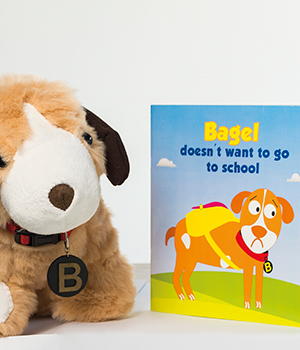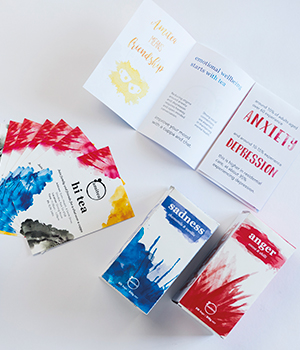Over the past three years I have been working with Match Studio, and design lecturers at the University of South Australia to challenge third year communication and design students to interpret and communicate mental health related topics in innovative and creative ways in a project called 'Visualising Mental Health'.
Match Studio is an in-house design group at the University of South Australia that gives art, architecture and design students the experience of working on real-world design projects: including meeting with 'clients', preparing briefs, working in creative teams, presenting concepts and prototypes to clients, and presenting final products.
The project emerged from talks I had with Match Studio in 2015 and 2016 about what could be achieved if skilled design/communication professionals design communication vehicles for spreading mental health and psychology-related knowledge to the general public.
How it works
As part of one of their 'studios' (i.e., practicum), third-year communication and design students organise themselves into teams and select from a range of mental health/psychology topics that I present to them.
In the subsequent months, the student groups work with me, or one of a number of participating local psychologists to understand the topic better and brainstorm ways of interpreting that topic for communication to a selected section of the population.
The groups each develop three concepts which they formally present to the psychologists, Match Studio and design lecturers. The lecturers grade the presentation and the quality of the concepts, and then as a group (psychologists, lecturers and students) a decision is made about which concept to take to prototype stage.
About two months later, the student groups present the final prototype in the last graded component of the 'studio'.
The final products are showcased at an exhibition called Visualising Mental Health at the Kerry Packer Gallery in the University of South Australia, during mental health week.
Topics offered to date
- What do we mean by 'quality of life'?
- What is experiential avoidance and how does it affect us?
- What is the difference between psychologists and psychiatrists?
- How can I proactively manage stress and maintain wellness in order to buffer myself against life's difficulties?
- What is cognitive behaviour therapy (CBT) and how can I apply it in my daily life?
- What is it with feelings? How do I know what normal emotions are and how should I deal with them?
- Experiential avoidance – what is it and how does it affect us in our everyday life.
- What is mental health first aid, and how can I learn to better support my friends and family if they have mental health issues?
- What are normal emotions and how can we deal with them more effectively?
- How do we teach people to become behaviour change experts in their own lives?
- The mental health and wellbeing of university students
- Perspective-taking: What is theory of mind (TOM) and how can we help people to develop their own TOM skills?
Examples of student projects


A series of character-based books, built on CBT principles for helping children address common fears; Tea bags that promote deeper conversationsm originally designed for use in aged-care facilities.
The big picture
Mental health and psychology-related topics make excellent content for design students to work with. As psychologists we sit on a vast body of literature on human behaviour that we need to share more widely, not just through journals, or through our clinical work, but through collaborations with artists, designers and communication professionals as one example.
The students find the work both personally helpful (e.g., gaining a better understanding of mental health) but also rewarding, knowing that their designs and concepts are helping educate others.
I've seen groups of students go beyond the requirements of the course to develop products to which they have a strong personal connection. They see genuine value in making these ideas available to the general public and absorbing these concepts into their lives.
The collaboration has shown me that there are ongoing opportunities for more focused communication with the general public around psychological and mental health concepts; and it is not just about mental illness. There is an appetite and interest for content across the functioning spectrum. How do we foster positive emotions, feel more engaged, have better relationships, be more productive, and find personal meaning?
I've learned that while psychologists are initially a bit confused about the whole concept, once they get involved and see the student grapple with the ideas, and then produce some amazing communication products, they are hooked.
Working on this project with Match Studio, the students and the lecturers has re-ignited in me a fascination and desire to work at the intersection of psychology and communication. This fascination was first triggered in me during my training when I worked on some psychology-themed sites for general public consumption.
In my current job at Flinders University I work in a mental health promotion role, using digital technologies (particularly blogging and digital media) to educate students about how to stay mentally fit, drawing directly from the psychological literature. This is a role I can see myself doing long-term.
The author can be contacted at [email protected]